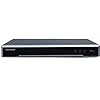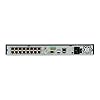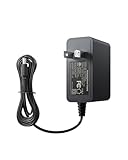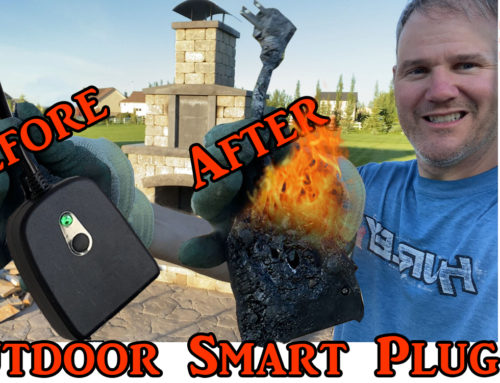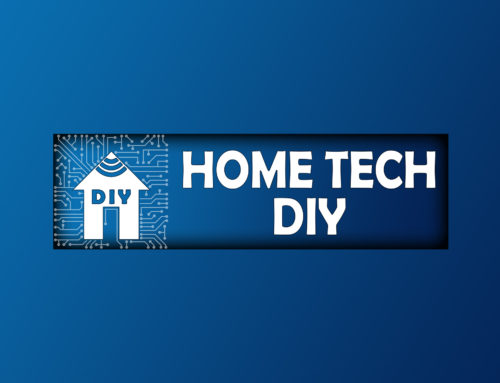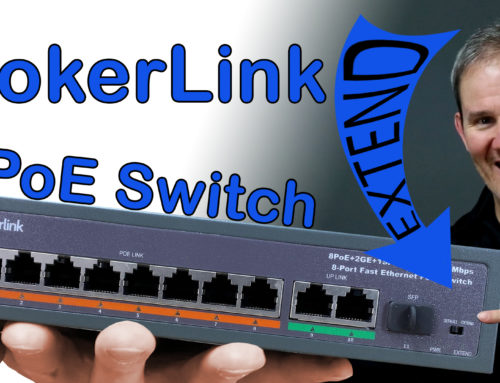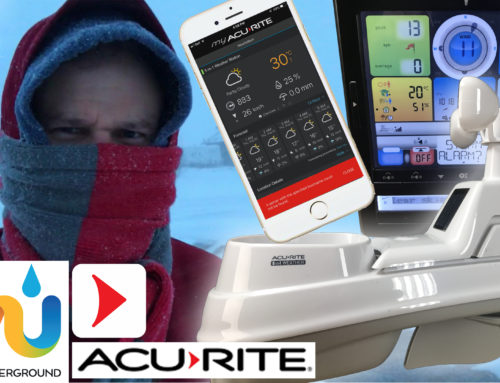Today we are going to explore the different methods available to power your wired IP security cameras.
Hikvision 16 Channel NVR DS-7616NI-I2/16P 16POE 12MP Resolution NVR Support Two Way Audio and Alarm in/Out
(as of December 26, 2025 15:08 GMT -07:00 - More infoProduct prices and availability are accurate as of the date/time indicated and are subject to change. Any price and availability information displayed on [relevant Amazon Site(s), as applicable] at the time of purchase will apply to the purchase of this product.)When you buy a security camera, you’ll see 2 main ports like these. There is a RJ-45 network connection and a 12v plug, but rarely will you find a power source included to power the camera. Some cameras can be powered with an adapter and then some must be, some can be powered over a network cable with the aid of a power injector and splitter, an unmanaged PoE switch, or a managed PoE switch. An NVR can also power your cameras. When looking to purchase an IP camera you will often see specifications such as “PoE Compatible” and “802.3af”.
So, what does all this mean?
ZOSI DC 12V 2A 2000MA US CCTV Power Supply Adapter for Home Security Camera Surveillance System
BeElion 2Kits 4PCS Passive PoE Injector and Splitter Kit with 5.5x2.1 mm DC Power Adaptor Connector,Black
$6.30Monoprice 16 Channel CCTV Camera Power Supply - 12VDC - 10Amps
Linksys LGS116P 16 Port Gigabit Unmanaged Network PoE Switch with 8 PoE+ Ports @ 80W - Ideal for Business, Home, Office, IP Surveillance - Ethernet Switch Hub with Metal Housing, Desktop / Wall Mount
$108.99NETGEAR JGS516PE-100NAS 16-Port Gigabit Rackmount Smart Managed Plus Switch, 85w 8xPoE, ProSAFE Lifetime Protection
Hikvision 16 Channel NVR DS-7616NI-I2/16P 16POE 12MP Resolution NVR Support Two Way Audio and Alarm in/Out
(as of December 26, 2025 15:08 GMT -07:00 - More infoProduct prices and availability are accurate as of the date/time indicated and are subject to change. Any price and availability information displayed on [relevant Amazon Site(s), as applicable] at the time of purchase will apply to the purchase of this product.)That covers the most popular ways to power your wired IP security cameras. My preference is the PoE on an unmanaged switch. They are so simple and it powers my cameras with little to no effort. If I were recommending a power source to someone new setting up a system, it would be an NVR. Compared to the setup involved with a PC and trying to figure out what software is best, and the research in understand what hardware would be required for a designated PC (and then the price tag), the NVR is an easy solution. It powers all your cameras from the same unit where you record your footage, manage your cameras, control remote access and view live feed. I plug my PoE switch and NVR into a UPS, or an uninterruptable power supply, in case there is a power outage, my cameras still have power.
Again, all the products seen here are detailed on my blog at NewfieBort.com, in the description below. Check out my video on my architecture to see how I have things setup. If you found this video helpful, please click the like button. If there is a particular subject you’d like more information on, drop me a line on my blog. Thanks for watching and please subscribe.


